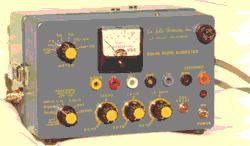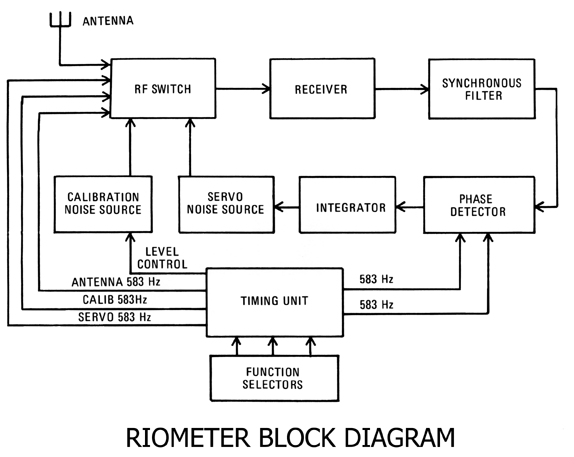
A single beam riometer receiver
manufactured by La Jolla Sciences. The antenna is typically a two or three element yagi pointing skyward.
(La Jolla Sci)
Ionosondes are ground-based swept-frequency vertical radars that are used to determine the electron density of the ionosphere. They provide information about the E and F layers in the altitude range of about 100 to 500 km. However, most of the absorption that occurs when a radio wave transits the ionosphere occurs in the D-region from about 70 to 100 km in height.
 A single beam riometer receiver manufactured by La Jolla Sciences. The antenna is typically a two or three element yagi pointing skyward. (La Jolla Sci) |
The riometer (relative ionospheric opacity meter) is one of the few instruments that can be used to determine ionospheric absorption. The first riometers were single beam units and operated at or near a frequency of 30 MHz. The principle of operation is to compare the currently received cosmic radio noise with a calibration curve (called a quiet day curve or QDC). The difference between the two is the current ionospheric absorption over the region monitored by the antenna at the time. |
Most of the cosmic noise monitored by a riometer comes from our own galaxy, and varies over the sky. It has a maximum when looking at the galactic centre (in the direction of Sagittarius) and a minimum at right angles to this direction. To minimize contamination with terrestrial RFI, riometers either employ a wide bandwidth (eg 500 kHz) to dilute the interference and/or sweep rapidly in frequency over several 100 kHz and use the minimum signal detected in this range.

Riometers are most often employed at high latitude and polar regions where they are used to detect polar cap absorption. This provides a measure of solar-generated high energy protons. The absorption is caused by the particles precipitating down to D-region altitudes. Riometers can also be deployed at lower latitudes, and although natural absorption is much less here, they have been used to monitor atmospheric nuclear explosions.
IPS Radio and Space Services operates several riometers in Antarctica and the data is available in real-time on the IPS web site at Riometer Data.
New imaging riometers are now being deployed and they produce images of ionospheric absorption with time, essentially showing a time history of particle precipitation across the sky. One such system is the Southern Hemisphere Imaging Riometer Experiment (SHIRE).

 Australian Space Academy
Australian Space Academy